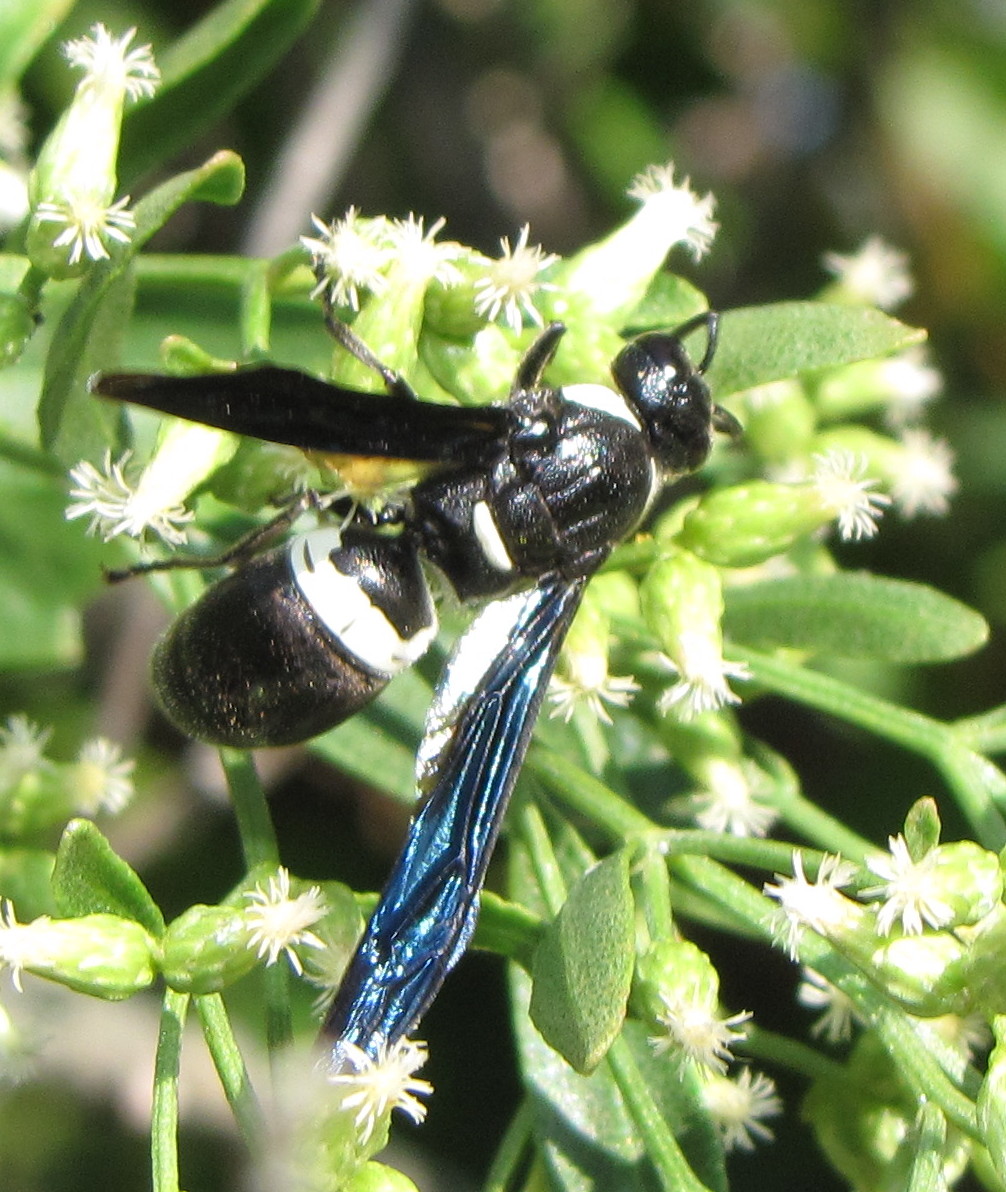

The mud pot is then closed by the wasp until the egg hatches. Once ready, the Fraternal Potter wasp lays an egg inside together with some type of food which is an insect or the larvae of an insect. It can take a few hours for dirt and water to be mixed and to create such a pot. Wasps of this genus are known for creating individual small mud pots to lay one egg in. These wasps are also popular due to their shape alongside having a black and white-ivory color.įraternal potter wasps have an elongated abdomen that widens towards the rear. Fraternal Potter Wasp Fraternal Potter Waspįraternal Potter Wasps ( Eumenes fraternus) are very popular wasps due to their use of mud to create a safe space to lay eggs. New Mexico is one of the states with the highest number of Fou-toothed Mason wasps 3. The pain level of the Four-toothed Mason wasp sting is comparable to the pain levels of the Bald-faced Hornet sting. While the sting itself isn’t venomous, it’s still painful.

Wasps of this genus resemble large flies and can be further distinguished by their long black wings.įour-toothed Mason wasps have a wingspan of at least 14mm. The Four-toothed Mason Wasp (Monobia quadridens) has a mostly black body with 3 white stripes. Four-toothed Mason Wasp Four-toothed Mason Wasp The queen Bald-faced Hornet lays almost all initial eggs in a nest. These nests are always seen above the ground and can sometimes be found attached to man-made structures.īald-faced Hornets might not be as aggressive as other wasps but they still live similar social lives led by a queen. The wasps also have horizontal black lines on their abdomen.īald-faced Hornets also build white paper-like nests. The white head or the bald heat of these wasps inspires their name. Bald-faced Hornet Bald-faced Hornetīald-faced Hornets (Dolichovespula maculata) are a common black and white wasp with a name inspired by their appearance. Some of them are also found around the world. The following species of Black and White wasps are common in North America. Some of these wasps are known parasites of moths such as fruit-eating moths. The result is a highly painful bite with very high levels of pain which may last around 24 hours.īlack and white wasps can also have a barbed stinger which is also painful to remove when stuck in the skin.īlack and white wasps can also be beneficial for farmers. They can sting if under threat and this sting can come with venom. Even though they can sting, they do so only if provoked and they sense their nest is being threatened.Black and white wasps can sometimes be dangerous to humans. Therefore, they are not aggressive and only the female adult can sting.

Since great black wasps are solitary wasps, they do not have a large colony to defend as do the social wasps. Their preferred habitat is areas where prey is located, like meadows, pastures and residential areas where gardens, landscaping plants and flowers are found. Therefore, their primary food source is nectar from surrounding flowers. With all the hunting they do, it is necessary for the female adults to consume lots of high-energy food. In areas where this insect lives, they can be seen flying with paralyzed insect prey in their mouth and stuffing the paralyzed insect into the underground nest. These insects gather prey, most commonly grasshoppers, locusts, cicadas and other large, “fleshy” insects that they feed to their immature offspring. Great black wasps are subterranean wasps, meaning they live underground and construct small underground nests where they care for their offspring. Females can sting, but only do so if their nest is threatened. In fact, male adults do not have the ability to sting and their only purpose in nature is to mate. Although their common name sounds intimidating, their name comes from the size of the insect, rather than the aggressiveness of the insect. Great black wasps are not aggressive due to the fact they do not have a colony to defend and are categorized as solitary wasps. The commonly considered distribution of this wasp is the eastern 2/3 of the U.S. Adult females of the species reach about 1-1 ½ inches long and are a little larger than the males. This wasp is black, mono-colored and without colored stripes, spots or other noticeable patterns on the body. The great black wasp is a very large wasp species, as its name infers.


 0 kommentar(er)
0 kommentar(er)
